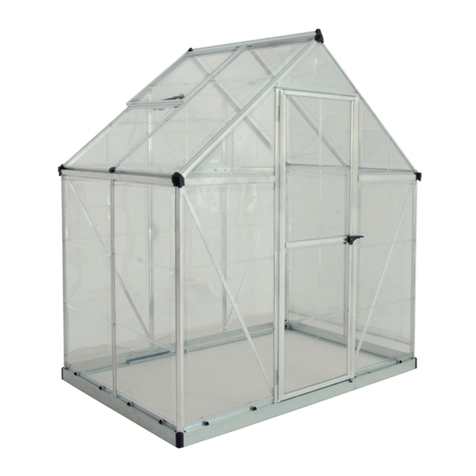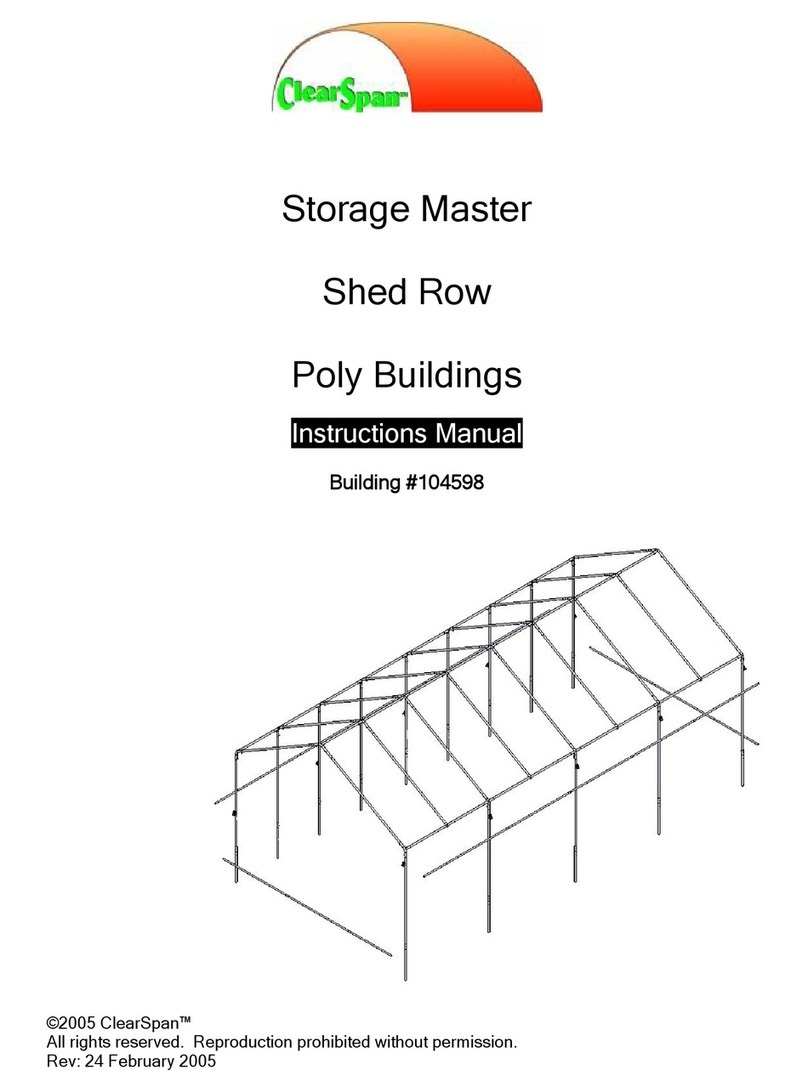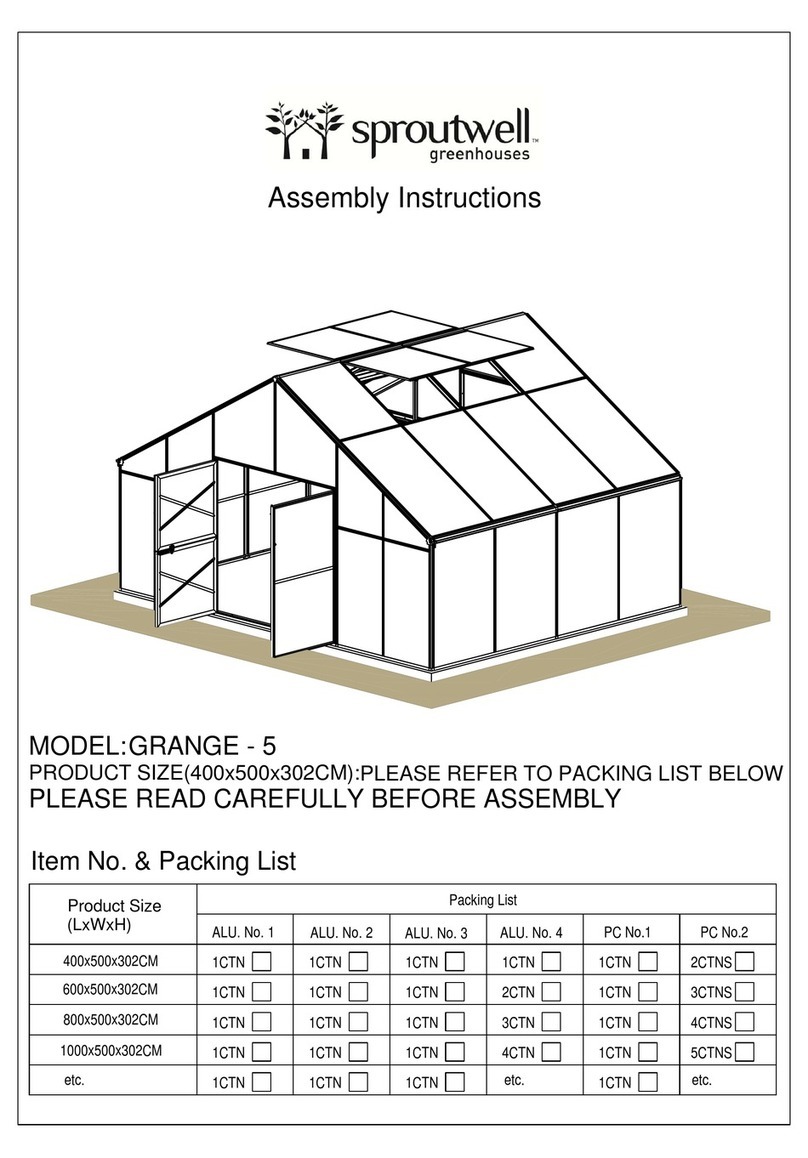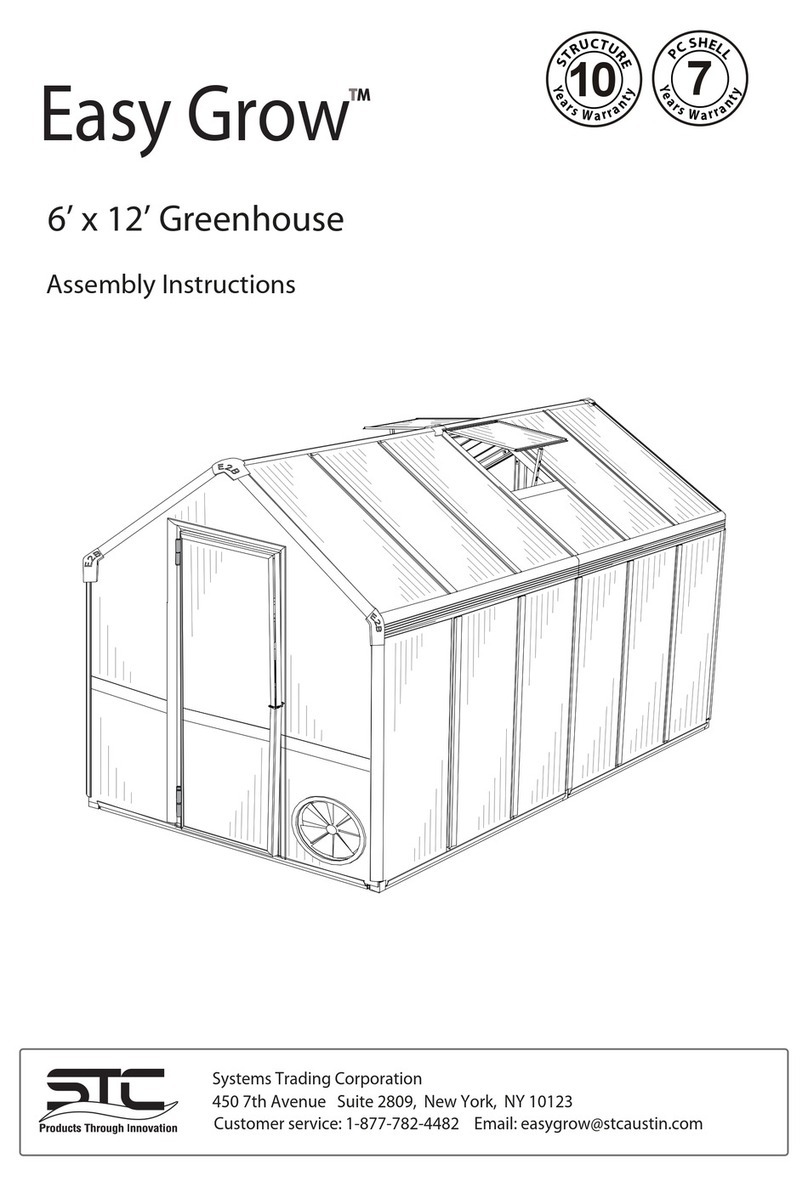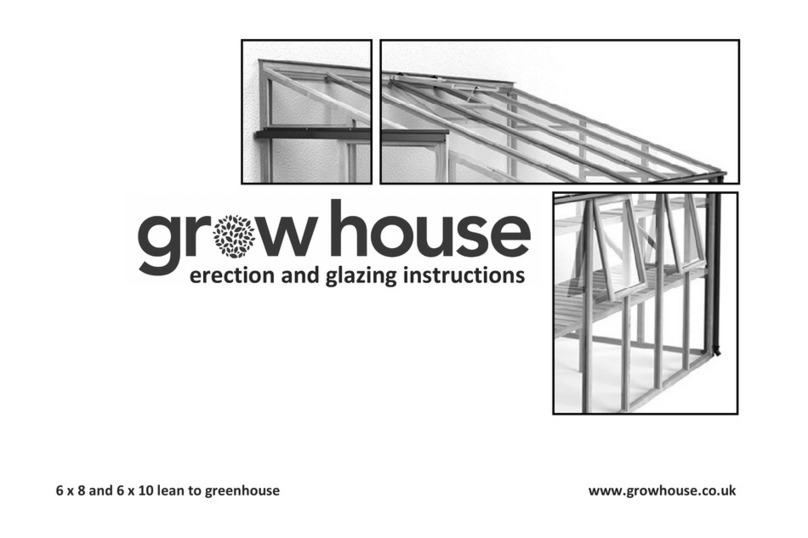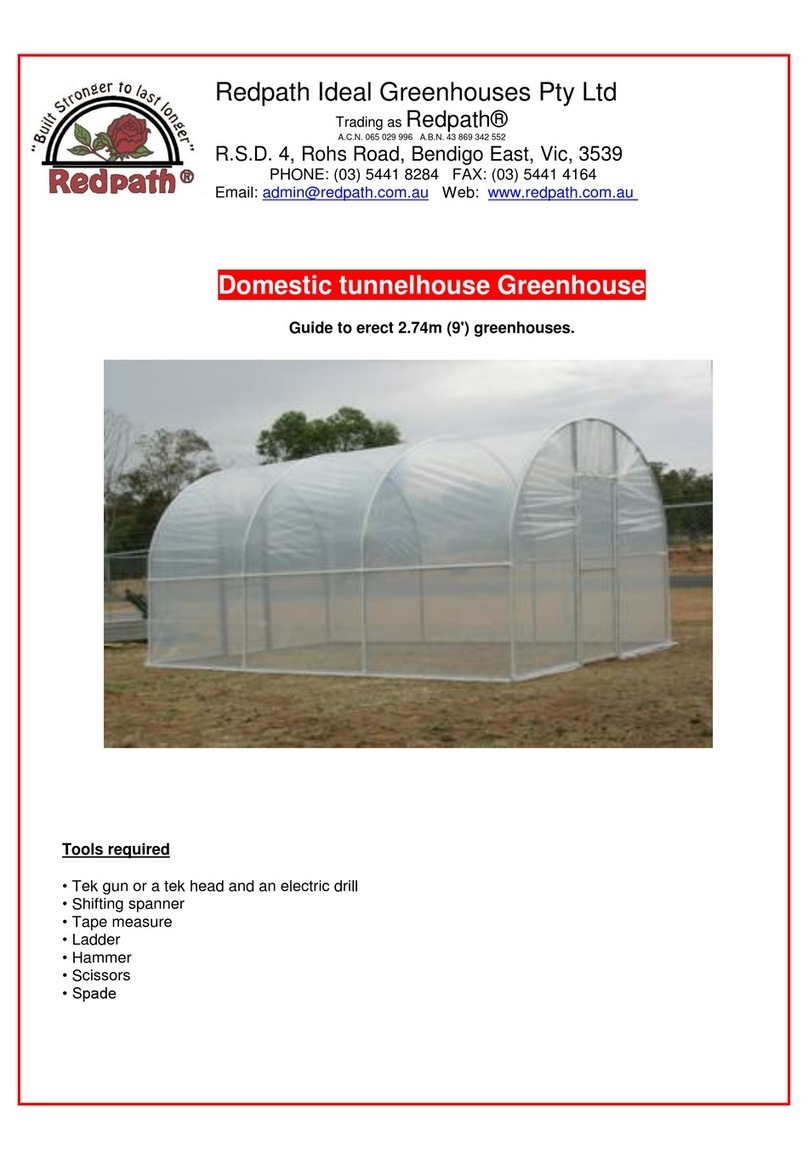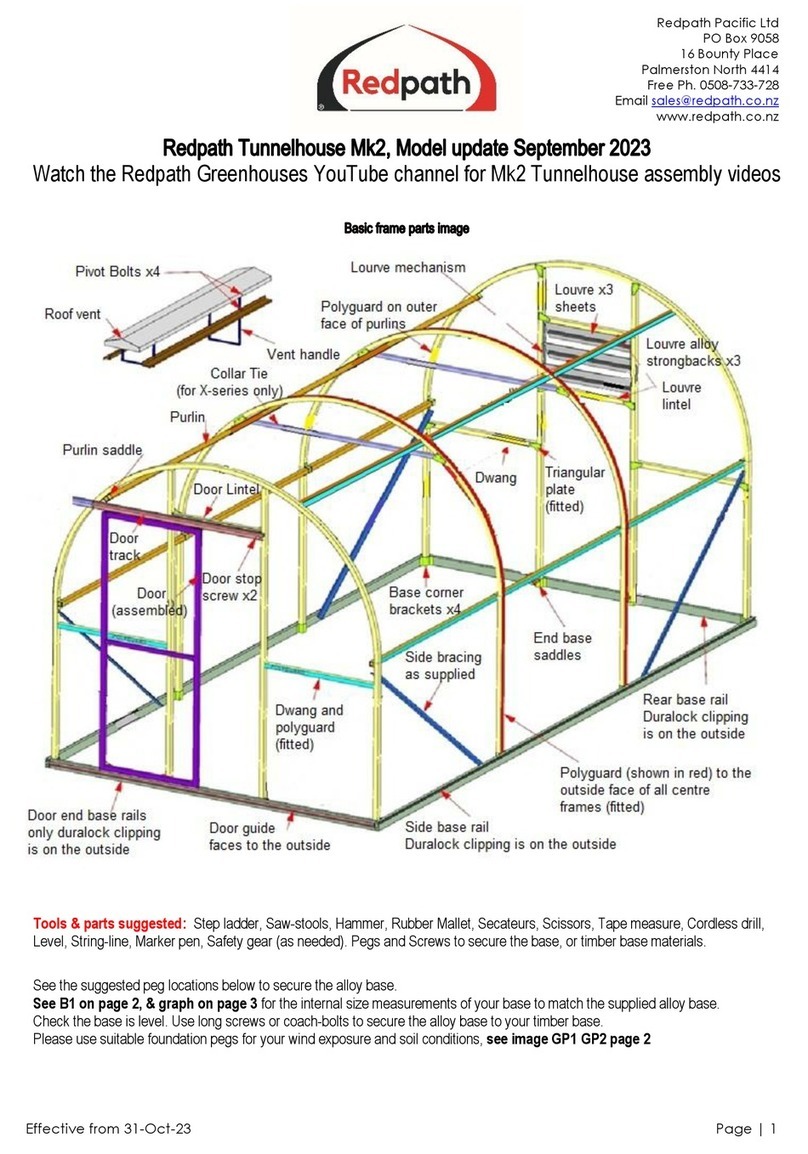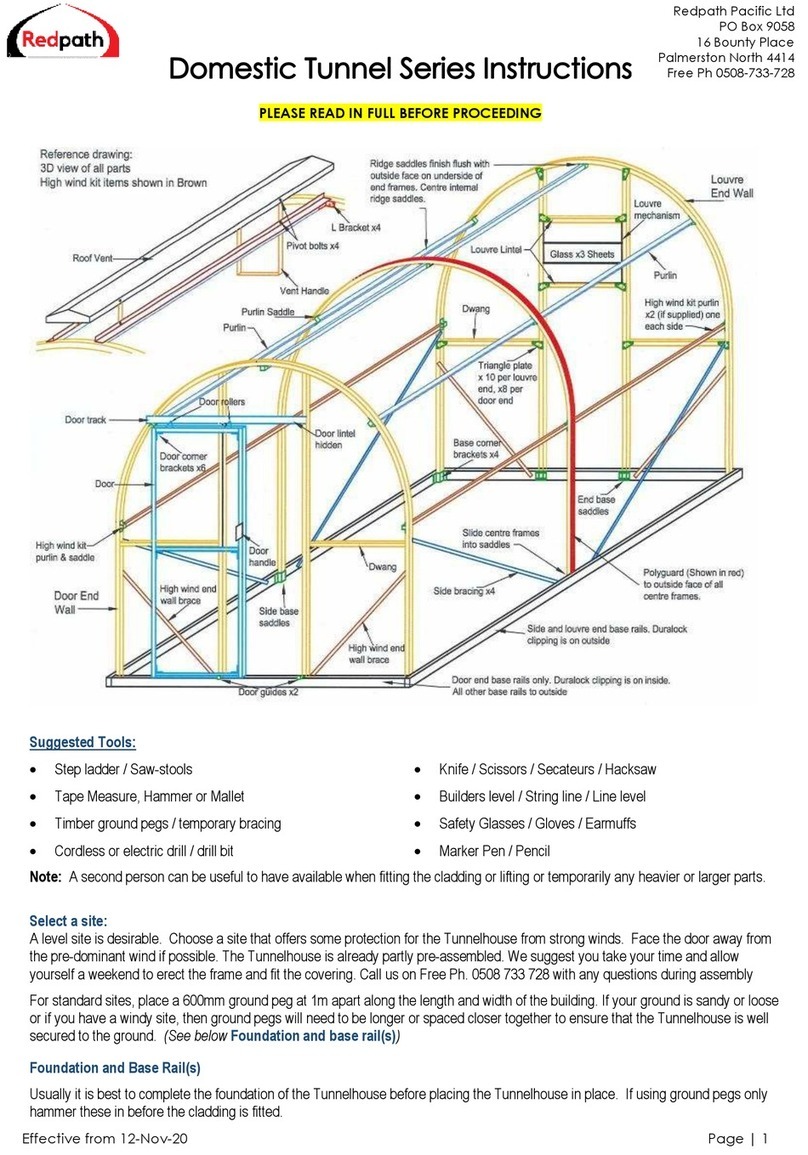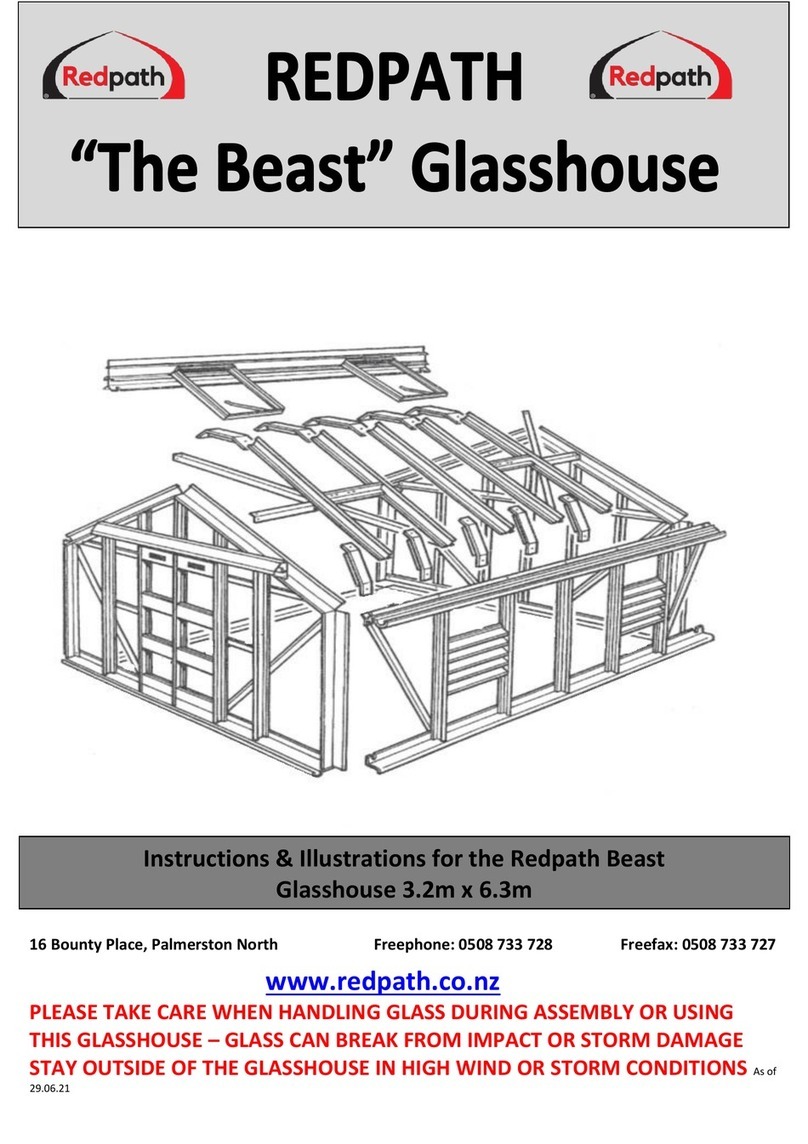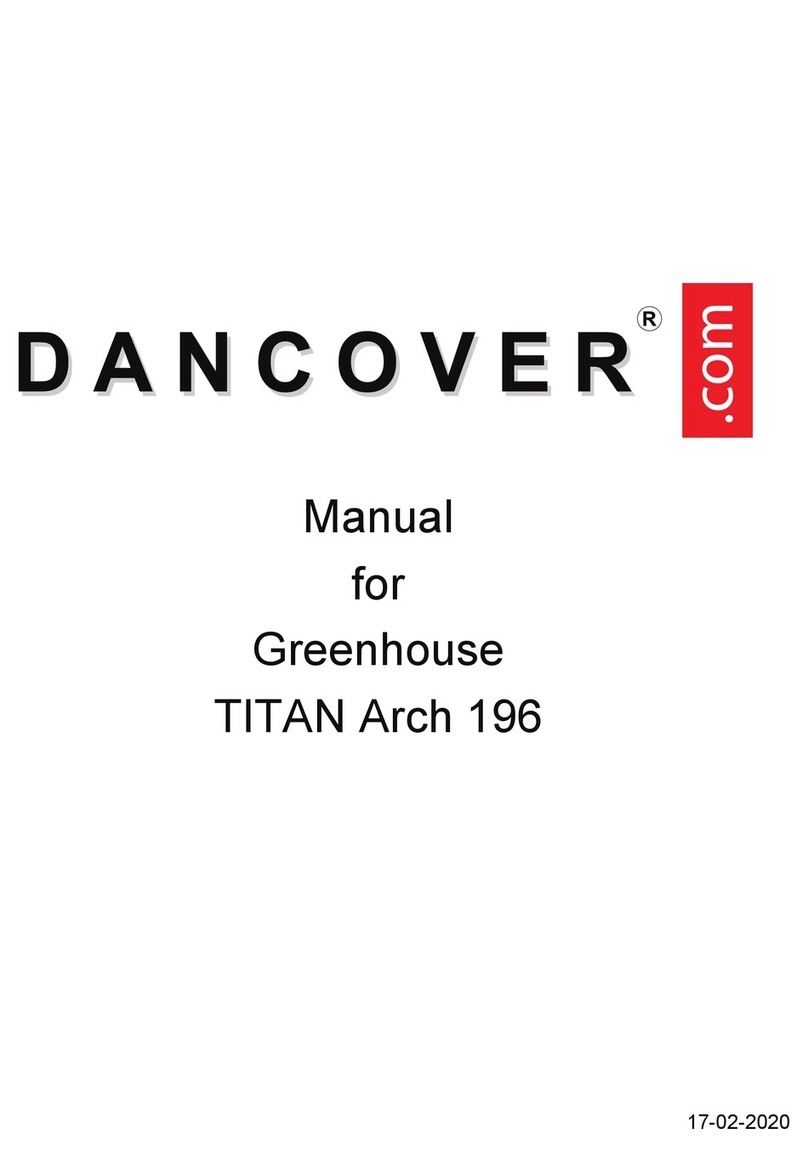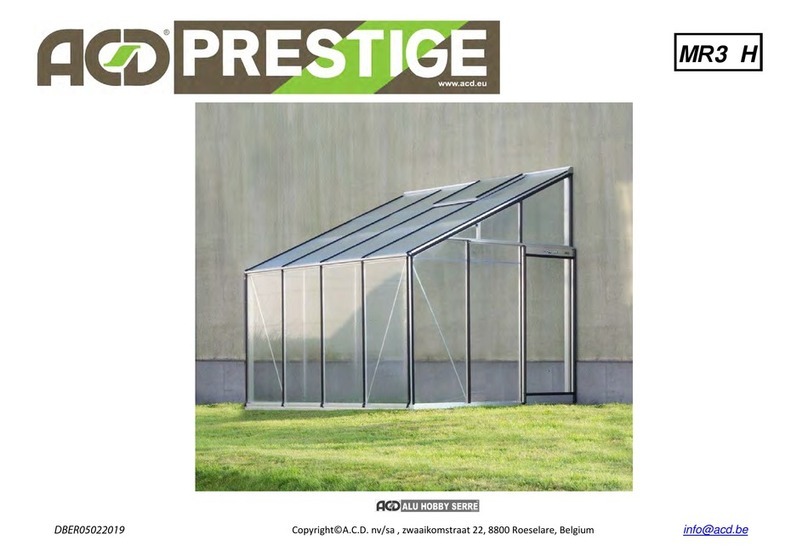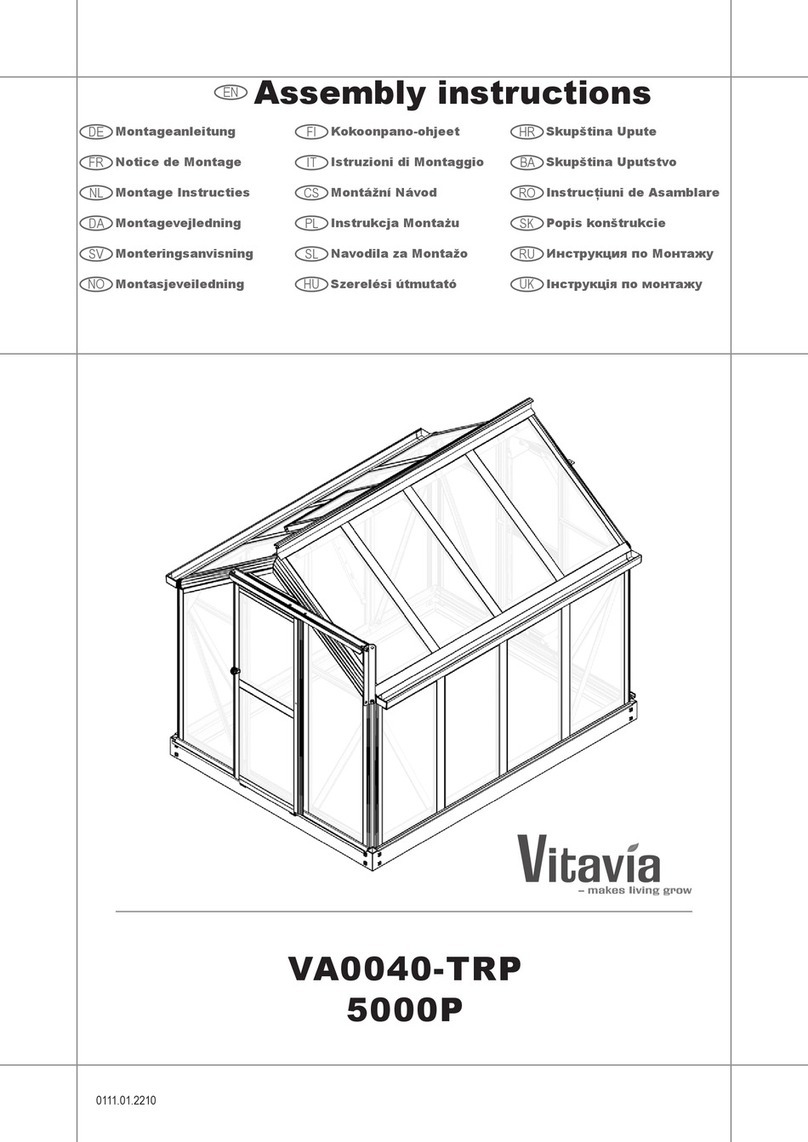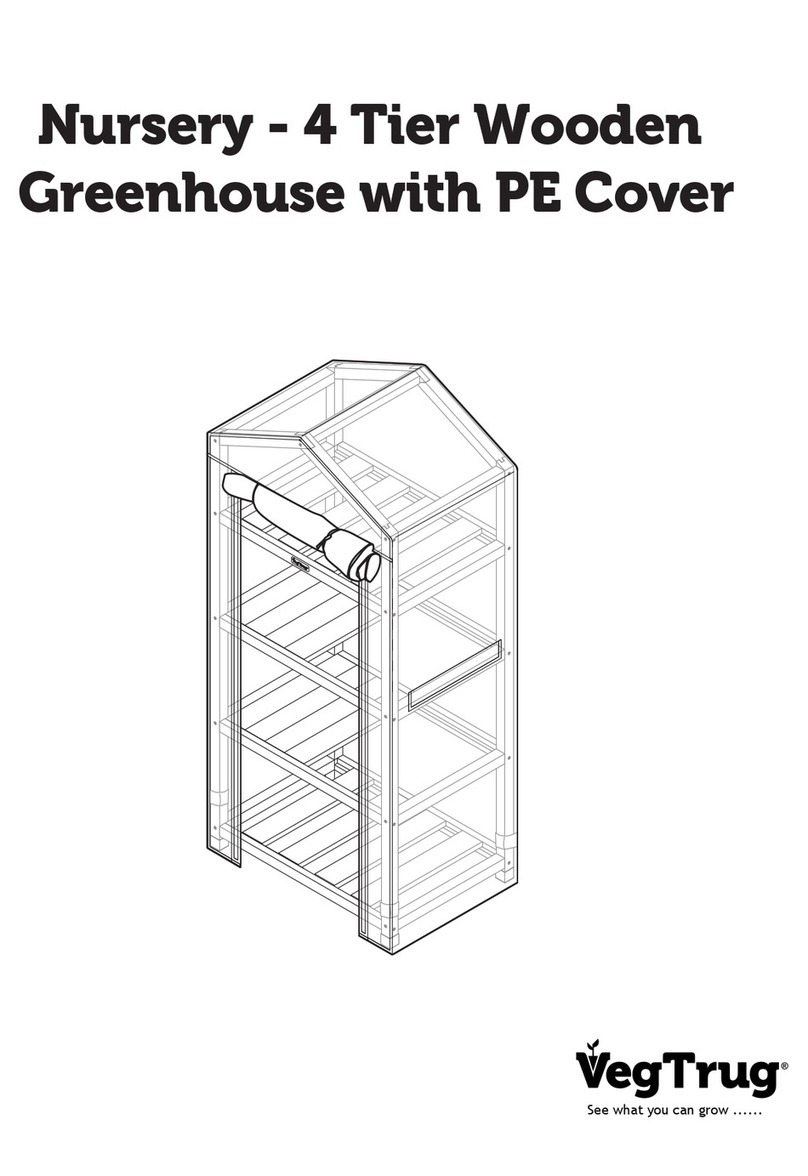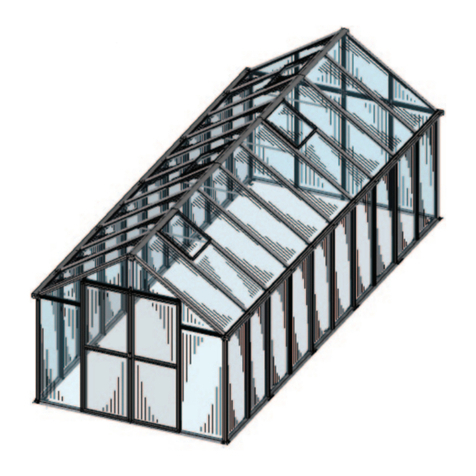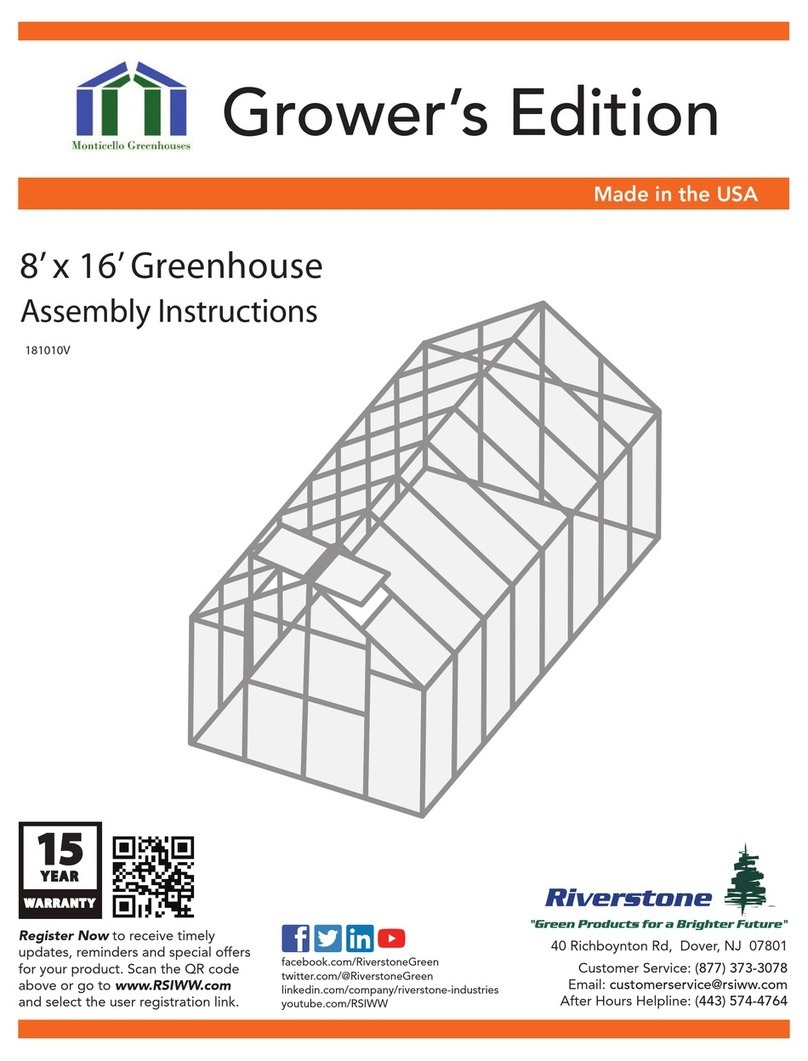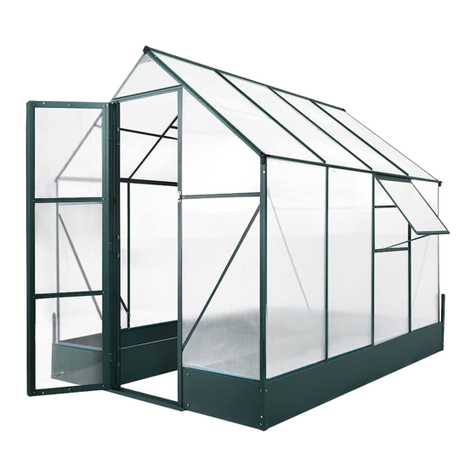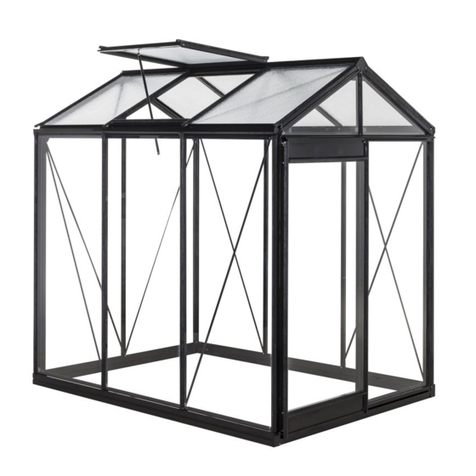FITTING THE COVERS TO THE TUNNELHOUSE
The covering is supplied in separate pieces. 1 for the door(s), 1 for each end, and 1 for the roof/side.
Install the covers on a warm, calm day.
The printing on the cover (if applicable) faces to the inside.
When trimming off the covers leave a 100mm ‘tail’ in place initially and when satisfied with the tension on the various parts , you
can trim the tail to 20mm for a tidy appearance
DOOR COVER –select the Duralock white channel and bead.
Lay the door frame on the ground with Duralock groove facing upward and lay the 2m x 1m door cover in approximate position
You will need to cut the clipping inserts (channel and bead) with a pair of secateurs to suit the length of the frame work grooves.
The clipping inserts should be cut to length finish approximately 25mm short of each corner.
You will begin by fitting the clipping insert to the top door rail firstly, - then the bottom door rail (pulling the cover tight as you do
so). Then install the inserts into the side door edges. (begin in the middle and work toward the corners)
ROOF/SIDE COVER, Select the correct type of inserts for the alloy grooves that are used on the end hoops & base rail
If your Tunnelhouse includes a roof vent please install the roof vent kit before-hand (see instruction below), You will need to cut
and remove the section of ridge purlin where you intend to locate the roof vent. The two internal hoops where the roof vent is to
be placed should have their flat faces facing toward each other and also have a 200mm gap in the Polyguard tape at the apex.
Before fitting the roof cover remove the cap vent part plus the aluminium pivot arms and handle
(leaving the two vent rails and upstand in place ( See Pics on page 10)
NOTE: If your Tunnelhouse has a roof vent take care not to catch the cover on the vent rail, Unfold the cover and lay it out over
the Tunnelhouse so that it rests in approximate position with an equal amount of excess film draping over each end hoop and to
each side base rail.
Begin at the apex at one end of the Tunnelhouse and install the 200mm Lockstrip holding system parts into the top curved face
working your way down to the left and right. Use a 1m length of Lockstrip for the straight part of the hoop.
Go to the other end and pull the cover tight along the length of the ridge, and repeat the process
Now move to the side base rails. These use the Duralock clipping system.
TIP: Sometimes it is simpler to lift the entire side of the Tunnelhouse up in the air and rest it on blocks or sawstools –this can make
it more convenient to insert the Duralock clip.
TIP: Read the Duralock clipping instructions above and also view the assembly video http://www.redpath.co.nz/commercial-
greenhouse-accessories/greenhouse-film-clipping-systems.html
Begin at the center & start inserting the U shaped Duralock channel insert + bead whilst tensioning the cover as much as
possible. Work your way to the left and right toward the ends of the building.
TIP: If the weather is cold, you can place a small heater inside the greenhouse after the ends and doors have been clad to warm the
tunnelhouse, and the covering to make it easier to stretch tight.

